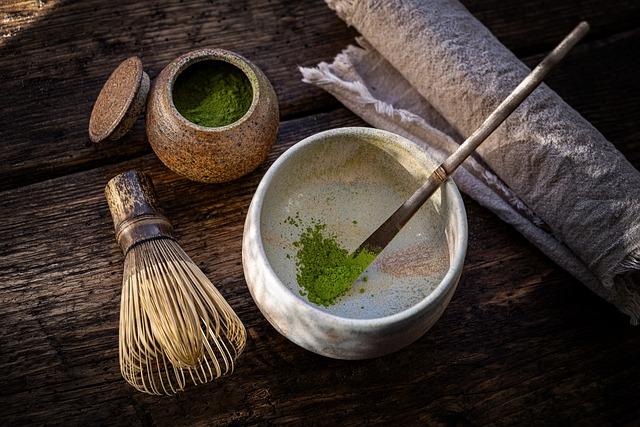Withdrawal Woes: Navigating Withdrawal Symptoms from Kratom
As the popularity of kratom continues to rise, so does the need for a comprehensive understanding of its effects and potential drawbacks. One widely discussed topic among kratom users is the experience of withdrawal symptoms upon discontinuation of this herbal supplement. In this article, we aim to shed light on the various withdrawal woes associated with kratom and provide valuable insights on how to navigate through them. By arming ourselves with knowledge, we can better understand the challenges that may arise and approach them confidently and effectively. Whether you are a long-time kratom user considering a break or someone curious about the potential downsides of this widely acclaimed herb, let us delve into the world of kratom withdrawal symptoms and explore strategies for managing them.
1. Understanding Kratom Withdrawal: Unraveling the Effects on the Mind and Body
Kratom, a tropical evergreen tree native to Southeast Asia, has gained popularity in recent years as a natural remedy for various ailments. However, it’s crucial to be aware of the potential withdrawal effects associated with kratom use. When individuals abruptly stop using kratom after prolonged use, they may experience a range of symptoms both mentally and physically.
The effects of kratom withdrawal on the mind can include:
- Depression and anxiety: Users may feel a sense of emptiness, sadness, or heightened anxiety as their brain adjusts to the absence of kratom’s active compounds.
- Insomnia and sleep disturbances: Kratom cessation can disrupt normal sleep patterns, leading to difficulties falling asleep or staying asleep throughout the night.
- Difficulty concentrating: Concentration and focus may become challenging during the withdrawal phase, affecting one’s ability to perform tasks that require cognitive functions.
On the other hand, kratom withdrawal can also manifest physically, with symptoms such as:
- Flu-like symptoms: Individuals may experience runny nose, sweating, muscle aches, and general fatigue resembling a mild case of the flu.
- Gastrointestinal issues: Nausea, vomiting, diarrhea, and stomach cramps are common physical symptoms experienced during kratom withdrawal.
- Restless legs syndrome (RLS): Restlessness and discomfort in the legs, especially during rest or sleep, are often reported during the withdrawal period.
It is important to note that the severity and duration of kratom withdrawal symptoms may vary from person to person. Seeking professional guidance and support from healthcare providers is advisable for a safer and more comfortable detoxification process.
2. Recognizing the Signs: Common Kratom Withdrawal Symptoms Explained
Kratom withdrawal symptoms can vary from person to person, but there are some common signs to look out for. If you or a loved one is considering quitting kratom, it’s essential to be aware of these potential withdrawal symptoms:
- 1. Physical symptoms: Individuals may experience muscle aches, tremors, sweating, abdominal cramps, or insomnia during kratom withdrawal. It is not uncommon to also feel restless or agitated.
- 2. Psychological symptoms: This may include irritability, anxiety, depression, or mood swings. Some individuals may also report difficulties in concentrating or experiencing cravings for kratom.
- 3. Digestive problems: Nausea, vomiting, and diarrhea are common digestive issues that can occur during withdrawal. It’s important to stay hydrated and nourished during this process.
Withdrawal symptoms typically begin within 6-12 hours after discontinuing kratom use, peaking around 2-3 days, and gradually improving over the course of a week. It’s important to note that the severity and duration of these symptoms can vary depending on the individual’s usage patterns and overall health.
3. Coping Strategies: Tips and Tricks to Easing the Discomfort of Kratom Withdrawal
When facing the discomfort of kratom withdrawal, having coping strategies in place can be extremely helpful. Here are some tips and tricks to ease the symptoms and make the process more manageable:
- Stay hydrated: Drinking plenty of water can help flush out toxins from your body and reduce the intensity of withdrawal symptoms.
- Practice relaxation techniques: Engaging in activities such as deep breathing exercises, meditation, or yoga can promote relaxation and reduce anxiety and restlessness.
- Seek support: Surround yourself with a supportive network of friends, family, or addiction support groups who can provide encouragement and guidance throughout the withdrawal process.
- Implement a healthy routine: Establish a daily routine that includes regular exercise, sufficient sleep, and a nutritious diet. This can help reduce cravings and improve overall well-being.
- Explore alternative therapies: Consider trying complementary therapies like acupuncture, massage therapy, or herbal supplements under the guidance of a healthcare professional. These can potentially alleviate withdrawal symptoms and promote a sense of balance.
Remember, everyone’s experience with kratom withdrawal is unique, so finding the coping strategies that work best for you may require some trial and error. It’s important to remain patient and kind to yourself during this process. If you’re finding the discomfort unbearable or have any concerns, don’t hesitate to reach out to a medical professional for further assistance and guidance.
4. Time to Heal: How Long Does Kratom Withdrawal Last?
When it comes to recovering from kratom addiction, understanding the duration of withdrawal symptoms is crucial for those seeking help. While the specific duration can vary from person to person, several factors influence the overall timeline. It’s important to note that everyone’s journey towards recovery is different, but we can provide a general idea of what to expect.
Factors Influencing Kratom Withdrawal Duration:
- Dosage and Frequency: The amount of kratom consumed and how often it was used can impact the length of withdrawal. Generally, higher doses and longer periods of use may result in more intense and prolonged symptoms.
- Individual Metabolism: Each person’s metabolism differs, affecting the elimination rate of kratom alkaloids from the body. This can influence how long withdrawal symptoms persist.
- Duration of Kratom Use: Withdrawal duration tends to be longer for individuals who have used kratom for an extended period. Short-term users may experience a quicker recovery.
- Other Personal Factors: Individual factors like overall health, mental state, and support system can influence the duration and severity of kratom withdrawal. Individuals with underlying health conditions or mental health issues may require additional time and support.
Typically, kratom withdrawal symptoms start within 12-48 hours of the last dose, peaking between days 2 and 4. The acute withdrawal phase usually lasts about a week, with symptoms gradually subsiding over time. However, some individuals may experience persistent symptoms that can last for a few weeks or even months.
5. Seeking Support: The Importance of Professional Help during Kratom Withdrawal
Seeking professional help during kratom withdrawal is crucial for a successful recovery. Here are a few reasons why:
- Expert Guidance: Professionals who specialize in addiction and withdrawal can provide the necessary guidance and support to navigate through the challenges of kratom withdrawal. They have the knowledge and experience to develop personalized treatment plans tailored to your specific needs, helping you manage symptoms and minimize the risk of relapse.
- Medical Supervision: Withdrawal from kratom can lead to physical and psychological discomfort. Professionals can monitor your health during the detoxification process, ensuring your safety and well-being. They can also prescribe medications or recommend therapies to alleviate symptoms such as insomnia, anxiety, depression, and cravings.
- Emotional Support: Withdrawal can be emotionally taxing, and it is important to have a support system in place. Professionals can provide a safe space to express your feelings, fears, and frustrations. They can also offer coping strategies and techniques to help you manage stress and prevent triggers that may lead to relapse.
Remember, seeking professional help does not mean you are weak or incapable of overcoming kratom addiction on your own. It is a brave and proactive step towards a healthier and happier life. With the support and guidance of professionals, you can increase your chances of long-term recovery and reclaim control over your life.
6. Taking Care of Yourself: Self-Care Practices for a Smoother Kratom Withdrawal Experience
When going through a kratom withdrawal, taking care of yourself is crucial for a smoother experience. Here are some self-care practices that can help you navigate this challenging period:
- Stay hydrated: Drink plenty of water throughout the day to flush out toxins and support your body’s natural detoxification process.
- Eat a balanced diet: Focus on nourishing your body with wholesome foods such as fruits, vegetables, lean proteins, and whole grains. This can help alleviate withdrawal symptoms and provide you with essential nutrients.
- Get sufficient rest: Aim for 7-9 hours of quality sleep each night to aid in recovery and reduce fatigue. Establish a relaxing bedtime routine and create a comfortable sleep environment.
- Engage in gentle exercise: Light physical activity, such as walking or yoga, can help alleviate anxiety, improve mood, and promote overall well-being. Find activities that you enjoy and are comfortable with.
- Seek support: Reach out to friends, family, or support groups who can provide encouragement and understanding during your kratom withdrawal journey. Sharing your experiences can help alleviate feelings of isolation.
- Practice stress management techniques: Incorporating stress-reducing practices such as deep breathing exercises, meditation, or journaling can provide a sense of calm and help you cope with cravings or emotional distress.
- Consider professional help: If you’re struggling with severe withdrawal symptoms or finding it challenging to manage the process on your own, seeking guidance from a healthcare professional or addiction specialist is highly recommended.
By prioritizing self-care practices and implementing these strategies, you can support your body and mind throughout the kratom withdrawal process, increasing your chances of a smoother and more comfortable recovery.
7. Stepping into Recovery: Creating a Personalized Plan to Overcome Kratom Dependence
If you or someone you know is struggling with kratom dependence, it’s important to understand that recovery is possible. By creating a personalized plan, you can take the necessary steps towards achieving a life free from kratom addiction. Here are some key strategies to help you on your journey:
- Educate Yourself: Start by educating yourself about kratom dependence and its effects. Understanding the impact it has on your mind and body will empower you to make informed decisions about your recovery.
- Seek Professional Help: Consider consulting with a healthcare professional who specializes in addiction medicine. They can provide valuable guidance, support, and develop a personalized treatment plan tailored to your specific needs.
- Build a Support Network: Surrounding yourself with understanding and supportive individuals is crucial. Connect with family, friends, or join support groups to share your experiences, gain encouragement, and learn from others who are also working towards recovery.
- Develop Coping Strategies: Identify healthy coping mechanisms to replace the use of kratom. Engaging in activities such as exercise, mindfulness meditation, hobbies, or therapy can help manage cravings or triggers effectively.
- Set Goals: Establish both short-term and long-term goals for your recovery. This will provide structure and motivation as you progress on your journey to overcome kratom dependence.
- Monitor Progress: Regularly track your progress to stay accountable. Keep a journal, note milestones, or utilize mobile apps designed to support addiction recovery. Celebrate achievements along the way to reinforce positive behaviors.
Remember, overcoming kratom dependence takes time and effort. With the right plan and support, it is possible to reclaim control over your life and embark on a healthier, substance-free future.
8. Kratom Alternatives: Exploring Safer Options to Relieve Pain and Stress
When it comes to managing pain and stress, Kratom has gained popularity in recent years. However, it’s important to be aware of alternative options to ensure a well-rounded approach to your well-being. Here are some safer alternatives worth considering:
- Kava: Originating from the South Pacific, Kava offers a natural way to relax and reduce anxiety. It contains kavalactones that help calm the mind and promote a sense of tranquility. With its soothing properties, Kava can be a great alternative to Kratom for stress relief without the risk of addictive qualities.
- CBD: Derived from the cannabis plant, CBD (cannabidiol) is renowned for its therapeutic benefits. It interacts with the body’s endocannabinoid system, providing relief from pain and stress. CBD is available in various forms such as oils, tinctures, and capsules, making it convenient to incorporate into your wellness routine.
- Valerian Root: Widely recognized for its sedative properties, Valerian Root is a natural remedy that helps alleviate both pain and stress. Its active compounds promote relaxation and aid in achieving a restful sleep, making it an excellent alternative to Kratom for those struggling with insomnia or anxiety-related issues.
Exploring these Kratom alternatives can provide a broader range of options to manage pain and stress without relying solely on one substance. Remember, it’s important to consult with a healthcare professional before incorporating any new supplements into your routine.
9. Staying on Track: Maintaining a Kratom-Free Lifestyle in the Face of Withdrawal Challenges
When it comes to maintaining a kratom-free lifestyle, it’s essential to be aware of the potential challenges that may arise during the withdrawal process. Withdrawal symptoms can vary from person to person, but by staying on track and implementing effective strategies, you can successfully overcome these obstacles. Here are some key tips to help you navigate through the withdrawal challenges:
- Develop a support network: Surround yourself with understanding and supportive individuals who can provide encouragement during this difficult time. Reach out to friends, family, or even support groups who have experience with kratom withdrawal.
- Create a structured routine: Establishing a daily routine can help you stay focused and avoid triggers that may tempt you to relapse. Plan out your activities, prioritize self-care, and set achievable goals to keep yourself motivated.
- Practice self-care: Taking care of your physical and mental well-being is crucial during the withdrawal process. Engage in activities that promote relaxation, such as meditation, yoga, or deep breathing exercises. Make sure to get enough rest, eat a balanced diet, and stay hydrated.
- Seek professional guidance: If you find the withdrawal symptoms particularly challenging, consider seeking professional help. A healthcare provider or addiction specialist can provide personalized support and guidance to ensure you stay on track.
Remember, staying on track and maintaining a kratom-free lifestyle requires determination and resilience. By implementing these strategies and seeking the necessary support, you can successfully overcome withdrawal challenges and live a healthier, kratom-free life.
Conclusion
In conclusion, navigating withdrawal symptoms from kratom can be a challenging and overwhelming experience. However, armed with knowledge and a support system, you can successfully overcome these woes. It is essential to always approach kratom cessation under medical supervision, as healthcare professionals can provide you with the necessary guidance and personalized strategies to minimize discomfort during this process.
Remember, withdrawal symptoms from kratom can vary in intensity and duration, but they are manageable. Stay determined and patient, knowing that it is just a temporary phase that will lead you towards a healthier and drug-free life. Adopting healthy coping mechanisms, engaging in self-care practices, and seeking support from loved ones or support groups will significantly contribute to your success.
While withdrawal symptoms may be challenging, it is crucial to keep in mind that they are your body’s way of readjusting to a balanced state without kratom. Each day without this substance brings you closer to experiencing better overall well-being and improved quality of life. So, don’t lose hope and embrace this opportunity for positive change.
Finally, it is important to recognize that everyone’s journey through kratom withdrawal is unique. What worked for one person may not work exactly the same for you. Be adaptable and don’t hesitate to explore various strategies or seek professional assistance if needed. Remember, there is no shame in asking for help, and together, we can navigate withdrawal symptoms from kratom and reclaim a healthier and more fulfilling life.












